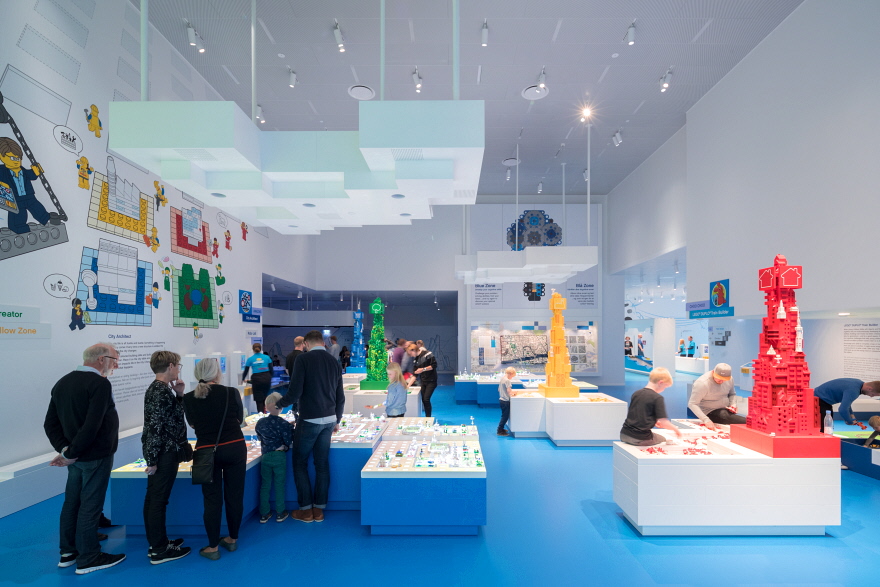For anyone who has experienced it firsthand, a visit to the gynecologist can easily be a dreaded one. Some purport the experience to be so awkward, they skip the opportunity to visit a doctor entirely, which can be seriously detrimental to a woman's overall health. Last week designers at frog announced Yona, a complete healthcare overhaul of the annual gynecology visit that aims to stop this vicious cycle of neglect and ask, "is there a better way to design the doctor's visit experience?" Combining extensive research with abundant prototyping, the team has developed not just a more material and form-friendly redesign of the speculum, but also an experience that is relaxing, empathetic, and even lighthearted.

"Our research showed us that many people with vaginas feel anxious about pelvic exams, which is no help to their health. Through Yona, we wanted to create a conversation and highlight that it is possible to balance human needs with clinical needs in the pelvic exam setting," said Hailey Stewart, the industrial designer who led the project alongside her research partner and former frog designer Sahana Kumar, with help from Mechanical Engineer Fran Wang and Visual Designer Rachel Hobart. Yona was originally a passion project the designers worked on with support from frog in between client projects and outside of work, conducting research and talking with medical professionals to learn more about the OBGYN visit experience on both sides.
 A standard speculum (left) versus the Yona speculum (right)
A standard speculum (left) versus the Yona speculum (right)The focal point of their pitch with Yona is to improve on the standard speculum, a metal instrument used to dilate the vagina and cervix invented in the mid-1800s with a controversial backstory (the inventor, James Marion Sims, apparently developed his original design based on research experiments he conducted on slave women without anesthesia). Amazingly, the design of the speculum has remained much the same since its development over 150 years ago.

The Yona speculum takes into account not only the ergonomics of the tool but also the material—two simple fixes that could result in a drastically more comfortable experience. Noteworthy features of the speculum include a three-vs-two "duckbill" design, which opens in a triangular shape that allows doctors a clear view while also reducing how wide the instrument must open, a silicone build, silent mechanics, and finally, a more ergonomic handle that is angled at 105 degrees as opposed to the typical 90-degree handle.
This redesign is not just aimed at giving more comfort to patients, as it also provides a chance for better accuracy with doctors. The currently dated design of the speculum forces doctors to open the cervix to an uncomfortable degree while also not necessarily even guaranteeing a good look into the vaginal canal. Stewart and her team prototyped different speculum designs and then put them into the hands of OB/GYN physicians to test, who noted that the improvements in ergonomics and form ultimately improved ease of use and efficiency when conducting exams.
On top of an upgrade of the medical instruments used in pelvic exams, the design team wanted to take it one step further by evaluating the exam experience as a whole. Before even prototyping, the designers conducted a series of in-field research sessions with patients and providers to understand the true pain points of gynecological visits in both a technical and emotional sense. "We realized that redesigning the speculum was the right place to start, but it was inseparable from the context in which it is used...There are so many moments in the exam process that are anxiety-inducing, and simple adjustments in the overall experience can go a long way in reducing that anxiety and discomfort, making for a more human exam experience. We wanted to consider the end-to-end exam by improving a few specific elements and moments and how they flow together to empower the patient and promote healthy outcomes," noted the team.

The first part of the Yona experience design involves an exam room app where you can set your exam procedure preferences and ask a health provider any prior questions you may have before getting started.
 A "cheeky" caption
A "cheeky" captionThe team also designed products for the actual exam room that promote a more seamless and relaxed environment, like a hanger that allows you to hang your clothes as opposed to piling them in a corner as well as a playful graphic that shows you exactly where your butt should go (in an attempt, as they write it, to reduce "lots of awkward scootching and cold butts on crinkly paper")
The Yona experience even incorporates a special meditation app that makes time waiting for the doctor more about zoning into a calm space rather than waiting awkwardly and nervously for your exam, which in turn makes the doctor's job that much easier.

Although at the moment Yona is a conceptual project very much still in development, the whole team says this is just the beginning: "We will be continuing to prototype, test and refine all the concepts included in Yona...eventually, we want to branch out to other aspects of the pelvic exam, like the stirrups and the exam table, and even other exams entirely."
The women who designed Yona are hoping to eventually partner with the right organization to bring this to life, but for now, they say it's about refining their concept to get the details just right—the most important part of the process is dreaming up a more human healthcare experience.
Learn more about the Yona project here













































































